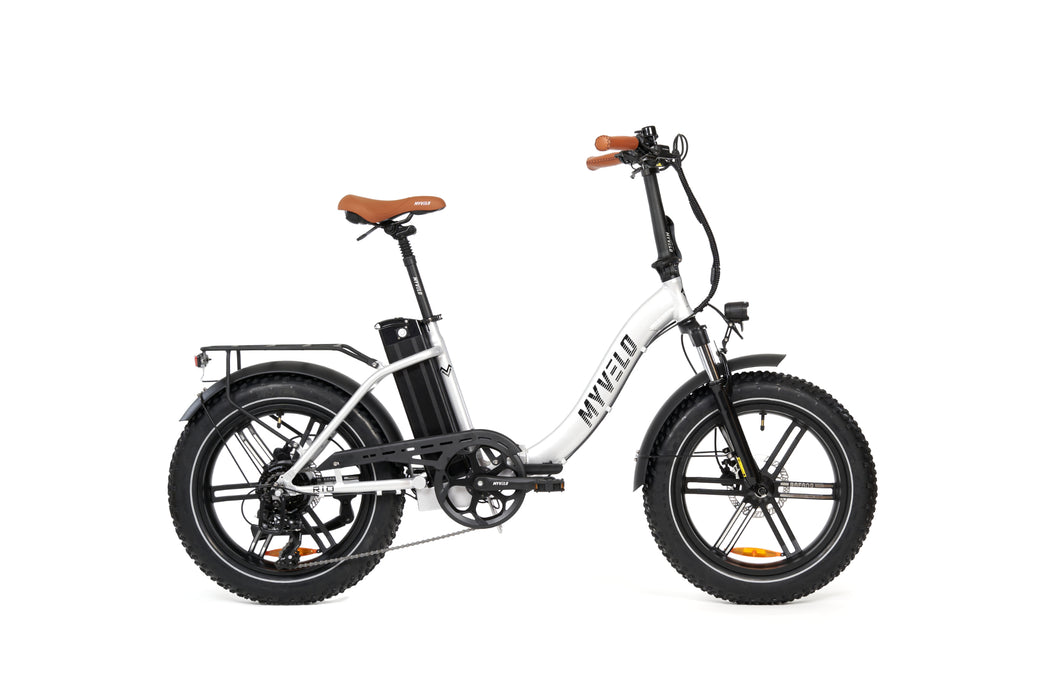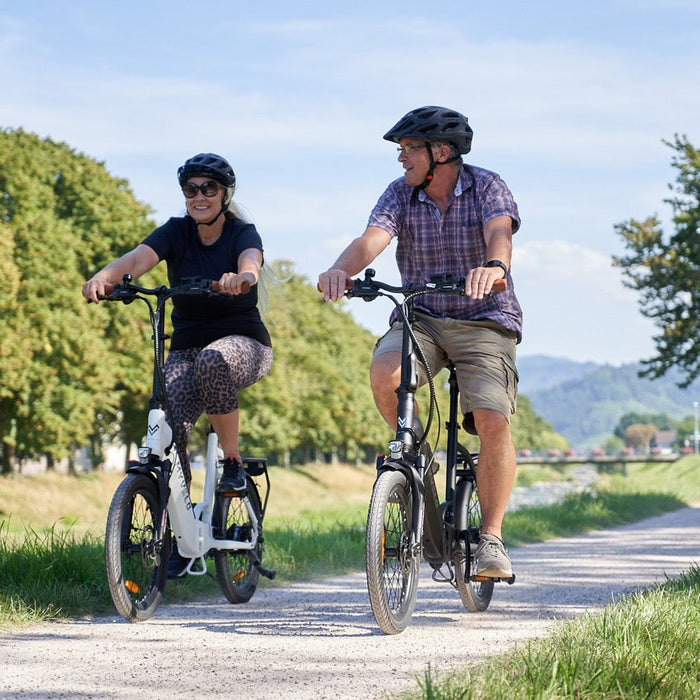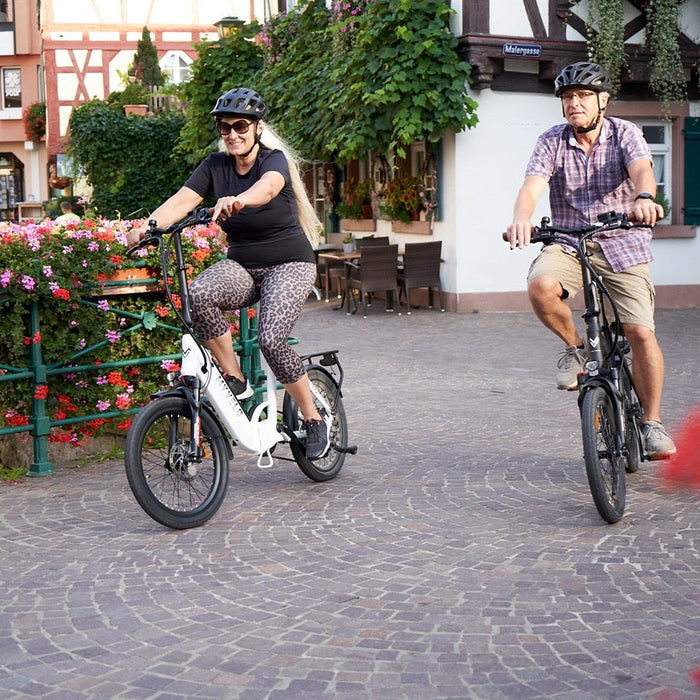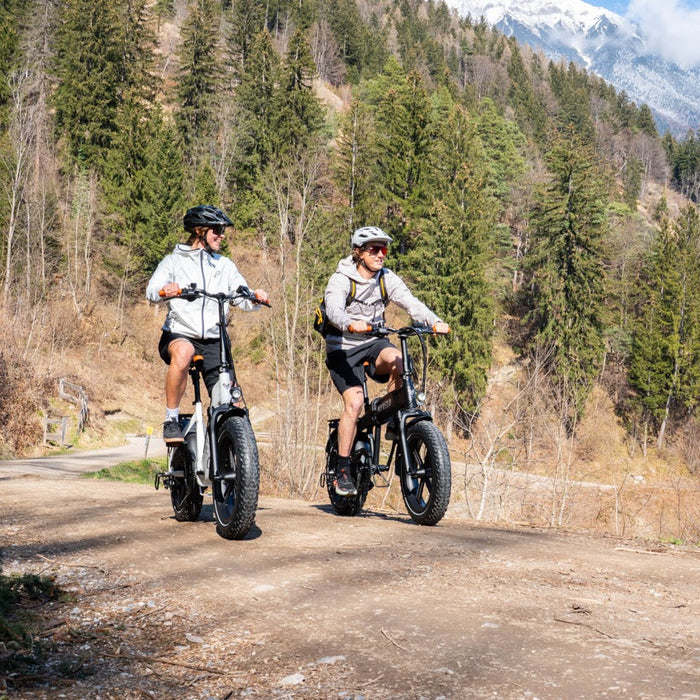
Rio electric folding bike
incl. FREE shipping & free returns
Ready for dispatch immediately, delivery time 2-3 days.

The freewheel is a mechanism on the rear hub of a bicycle that allows the cyclist to rest the pedals in certain situations without the crank and thus the rear wheel turning. The freewheel helps make cycling more efficient and comfortable.
The freewheel consists of a pinion gear mounted on the rear hub and a freewheel clutch. This clutch allows the pinion gear to rotate with the hub in one direction (usually forward) while rotating freely in the other direction. This means that the pedals are only connected to the crank and pinion gear when the rider is pedaling and moving the bike forward.
Situations in which the freewheel is particularly useful are, for example, when riding downhill or when the bike is rolling faster than the rider's pedaling speed. In these moments, the rider can rest the pedals without the crank turning. This increases riding comfort and allows the cyclist to better concentrate on the stability and control of the bike.
The freewheel is now a standard component of almost all bicycles with derailleur gears .

Stress ist längst zur Volkskrankheit geworden – Dauerbelastung im Job, private Verpflichtungen und ständige Erreichbarkeit führen bei vielen Menschen zu einem Gefühl der Überforderung. Doch es gibt einen einfachen Weg, den Kopf freizubekommen: Radfahren. Ob gemütlich durch den Park oder sportlich auf dem Rennrad – das Fahrrad wirkt wie ein natürliches Ventil für Stress. Warum das so ist, zeigt dieser Artikel.

Der Kettenverschleiß ist bei E-Bikes ein noch wichtigeres Thema als bei klassischen Fahrrädern. Der leistungsstarke Motor unterstützt die Pedalkraft, wodurch eine höhere Belastung auf die Kette wirkt.

Der Eco Modus ist eine der wichtigsten Unterstützungsstufen eines E-Bikes und bietet eine ideale Balance zwischen Motorunterstützung und Energieeffizienz. Doch was genau bedeutet Eco Modus, wann sollte man ihn nutzen und welche Vorteile bringt er im Alltag? In diesem Artikel erfährst du alles Wichtige über diese smarte Fahrstufe.